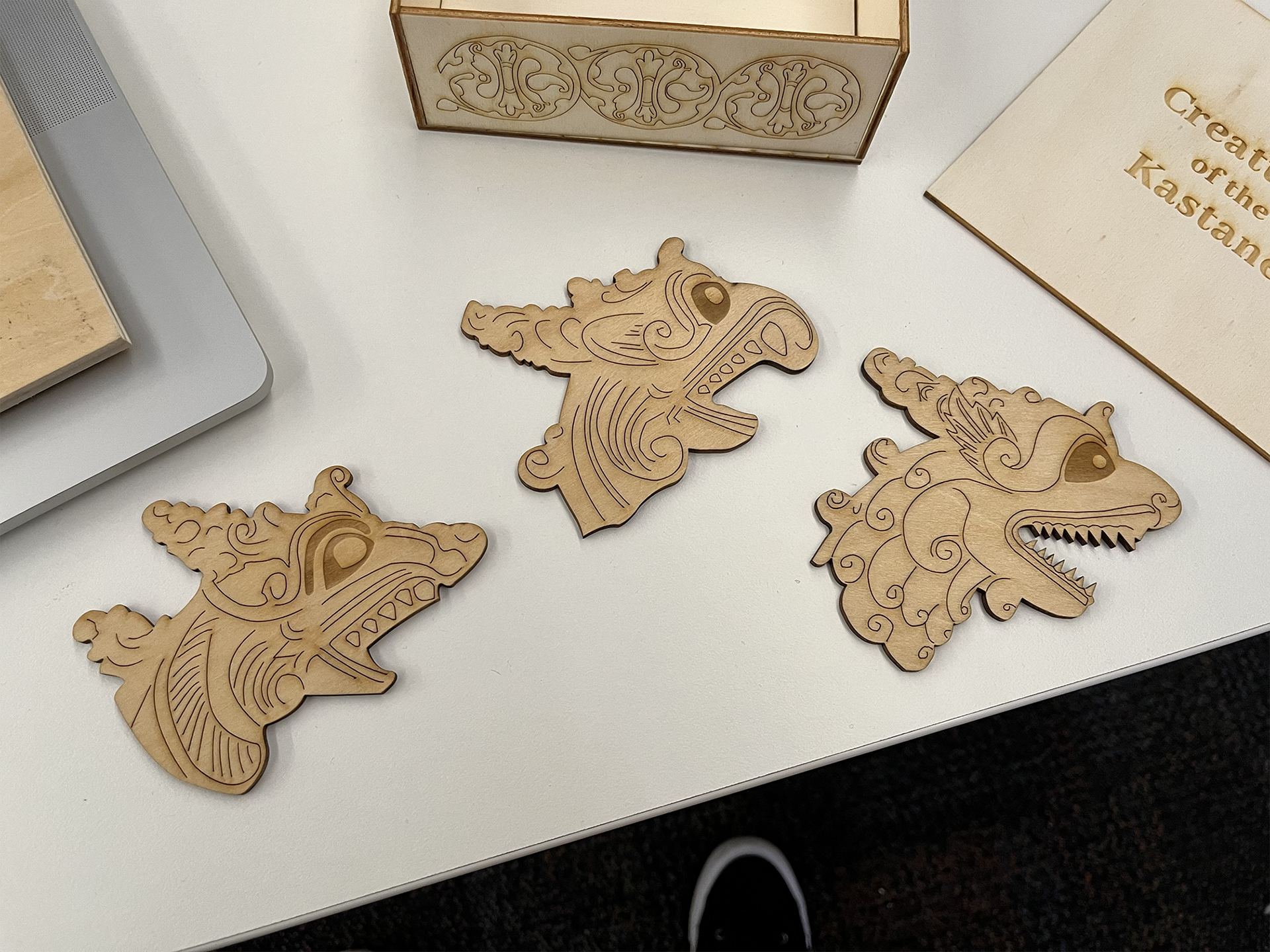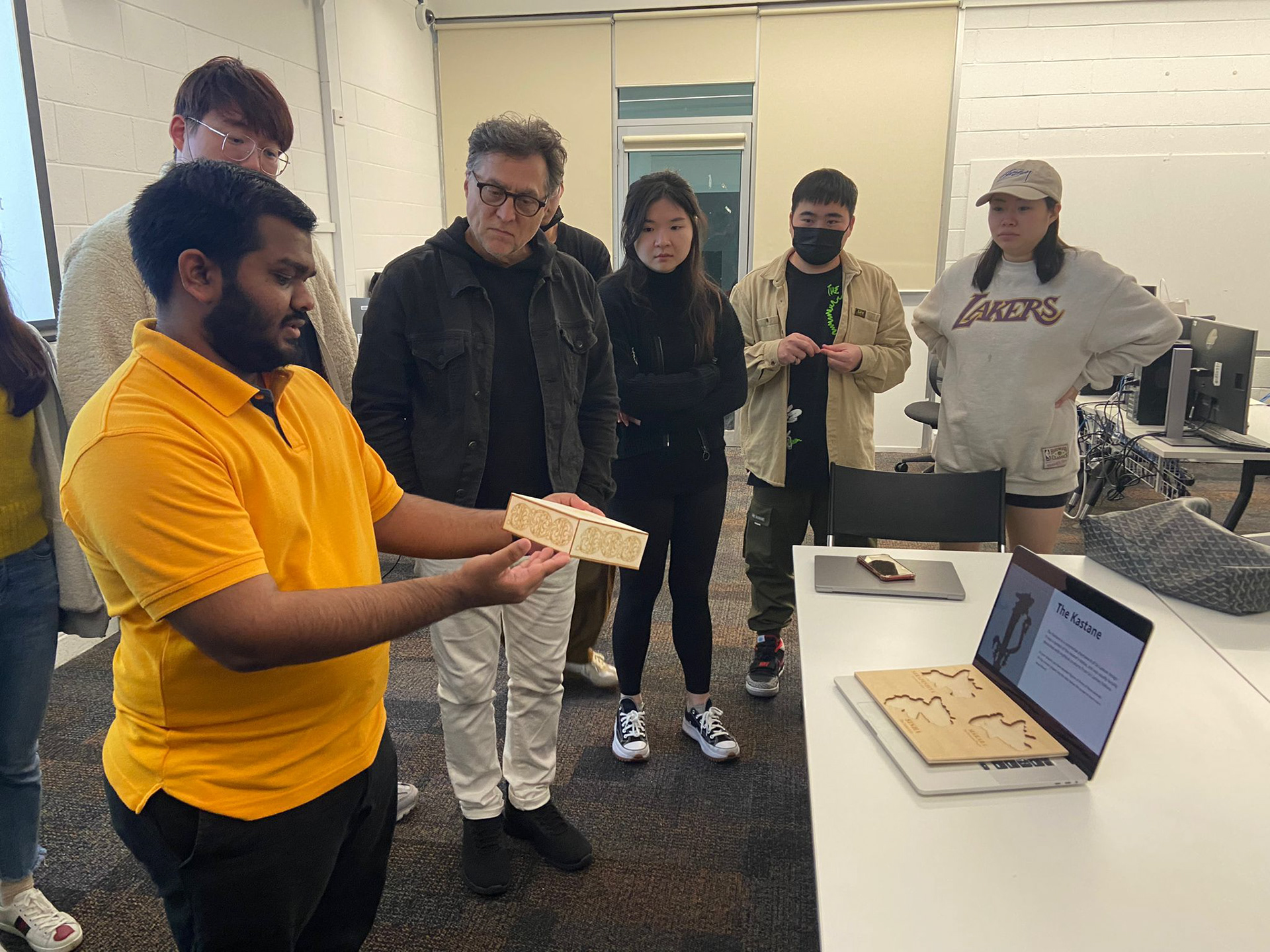Type: University Project
Role: Concept design, physical prototyping
Tools: Adobe Illustrator, Adobe InDesign, CNC laser cutting
Year of completion: 2022
Role: Concept design, physical prototyping
Tools: Adobe Illustrator, Adobe InDesign, CNC laser cutting
Year of completion: 2022
The Challenge
The design challenge in this assignment was conceptualise, prototype and present a human-centred design intervention for BLV (blind and low vision) museum visitors. I decided to focus on a single artefact, the Kastane, a ceremonial shortsword of Sinhala Sri Lankan design historically worn by Sri Lankan nobles. The hilt and scabbard are lavishly decorated and depict mythical figures from Sri Lankan folklore.
The PROCESS
I began this assignment by researching similar successful design interventions from other museums around the world. I was particularly inspired by the V&A Museum's concept of sensory backpacks, and also by Museum In A Box. I found their approaches to engaging BLV vsitors fascinating for how they de-emphasised the traditional museum experience's focus on sight and seeing, and emphasised other senses such as touch and hearing with tactile objects and audio-based information. I combined elements of both in my eventual design intervention. Based on my research, I decided to further limit my own scope and aim my intervention at BLV children, who have specialised needs compared to adult BLV visitors.
The SOLUTION
The Creatures of the Kastane Playset and Activity Board helps young (ages 5-12) BLV visitors to better engage with the kastane artefact by extracting the elaborate forms of the mythical creatures found on the sword hilt and scabbard into wooden figures that can be touched and looked at closely (this is the “playset” part of the concept).
The second part of the concept is the “activity board”, which consists of a digital display and a physical interface which the figures from the playset can be slotted into. The visitor would slot the figurines into the board and receive information on the figures they inserted in the form of a guided activity.





Final Thoughts
This assignment helped me to achieve a better understanding of human-centred design and how to research and design for underserved audiences. Design is often presented as a very visual discipline, and it's easy for that bias to extend from its practitioners into the things we create. It's important to decentre yourself and your own experience when designing, and to design for your audience and their unique lived experience.

